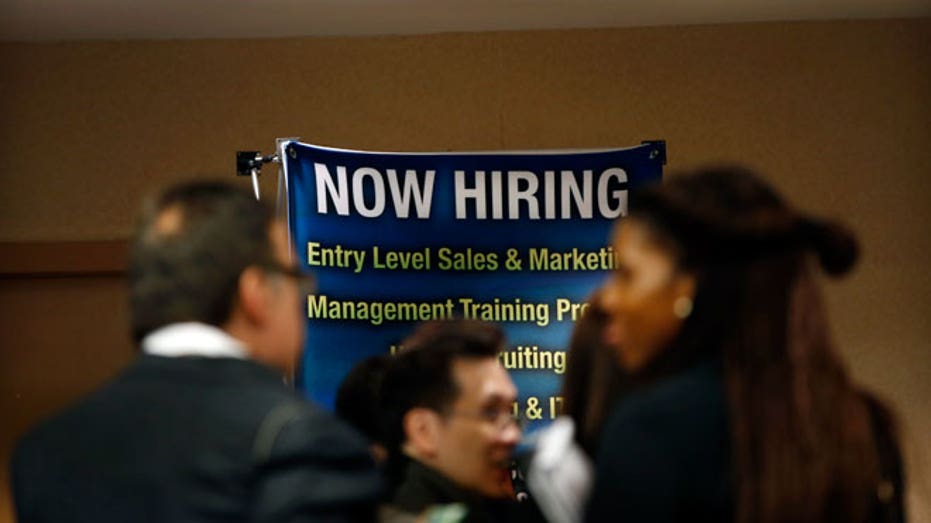The decline in workforce participation should be worrying Washington
Biden pushes success of economic plans as inflation plagues country
New York Republican Lee Zeldin weighs in on the president’s economic agenda and Democrats’ spending plans on ‘The Evening Edit’
On Friday, we will see the final jobs report of the year. In Washington, most of the attention will focus on the employment numbers and the unemployment rate and how they compared to expectations. But I, and many other business leaders, will be looking a little further down in the report to the labor force participation rate for any indication of progress on addressing the worker shortage crisis.
Last month’s report, which covered October, was not positive. The labor force participation rate was unchanged for the month and the total size of the labor force was some 2.3 million people smaller than it was two years ago, before the pandemic. We cannot begin to fill the 10.4 million open jobs in our economy if we don’t get millions of people back into the labor force.
DOW JUMPS 617 POINTS
And the consequences for our economy are significant for small businesses that still can’t fully reopen because of a lack of workers and supply chain bottlenecks that threaten this all-important holiday shopping season.
To better understand why people are not returning to the workforce, the U.S. Chamber surveyed individuals who were employed full-time prior to the pandemic but have yet to return to full-time work. We wanted to know what these individuals are doing, how they are supporting themselves, and whether they are likely to return to work. What we found was not encouraging.
KROGER RAISES PRICES AS INFLATION HEATS UP
One in five of the previously employed say they are doing nothing to look for work and another 15 percent say they are just barely looking. In some instances, it is for good reason – eight percent report they have become business owners or are now self-employed, two percent are in school, and nine percent have returned to work, but only part-time.
Of the remaining 70%, 40% say they are not eager to return to full-time work. Overall, one in three workers say they don’t expect to return to full-time work before next April, with nearly one in ten saying they will never return to full-time work.
SMASH & GRAB IS A PRODUCT OF THE PANDEMIC
US economy adds 531K jobs in October
FOX Business’ Edward Lawrence and Dagan McDowell break down the October jobs report.
So, how are these individuals supporting themselves? The formerly employed report using a combination of income from other members of their household (45%), stimulus payments received during the pandemic (48%), savings (47%), and unemployment benefits (36%) to get by. Fifty-six percent report that they believe they can get by for more than six months before it becomes essential to return to full time work, with 26 percent saying it will be more than a year before it is necessary to return to work.
Many speculate that this is all COVID-19 related, but while it is certainly the case that COVID-19 has had an impact, it is becoming increasingly clear that something larger is at work. For example, only 22 percent report that the end of the pandemic would cause them to increase their urgency to return to work, and only seven percent report that schools and daycare center in their community fully reopening would cause them to increase their urgency. Some commentators are quick to point out that employers simply need to pay more. Of course, employers are paying more, but that doesn’t appear to be the silver bullet either. Just one in three of the formerly employed say a five percent raise over their previous salary would increase their urgency to return to work. Part of the solution will rest with business. Forty-three percent reported that more flexible workplace hours would cause them to increase their urgency to return to work full time, while 39 percent said the same about being permitted to work from home. GET FOX BUSINESS ON THE GO BY CLICKING HERE Government must also play a role. State and federal policymakers must be very cautious about creating disincentives to work. For example, many of the new transfer payments included in the so-called "Build Back Better" plan are not tied to work. While well–intentioned, these benefits may simply make it easier for individuals to avoid returning to the workforce. At the state level, accessibility to unemployment benefits–either because of a fear of COVID-19 or because of a refusal to become vaccinated needs to be examined. President Biden delivers remarks on the October jobs report This is not the first time we have seen a precipitous drop in the workforce participation rate. The 2008 Great Recession brought a significant drop in the number of men aged 25 to 54 in the workforce. While many expected participation to bounce back when the recession ended in 2009, that didn’t happen. Participation only began to recover in 2016 and never fully recovered to prerecession levels. The failure to address the decline in workforce participation hurt families, communities, and our economy. We cannot afford to make that mistake again, which is why it is critical that policymakers join the business community in making getting people back into the workforce a top priority. Source: Read Full Article
President Biden delivers remarks on the October jobs report

